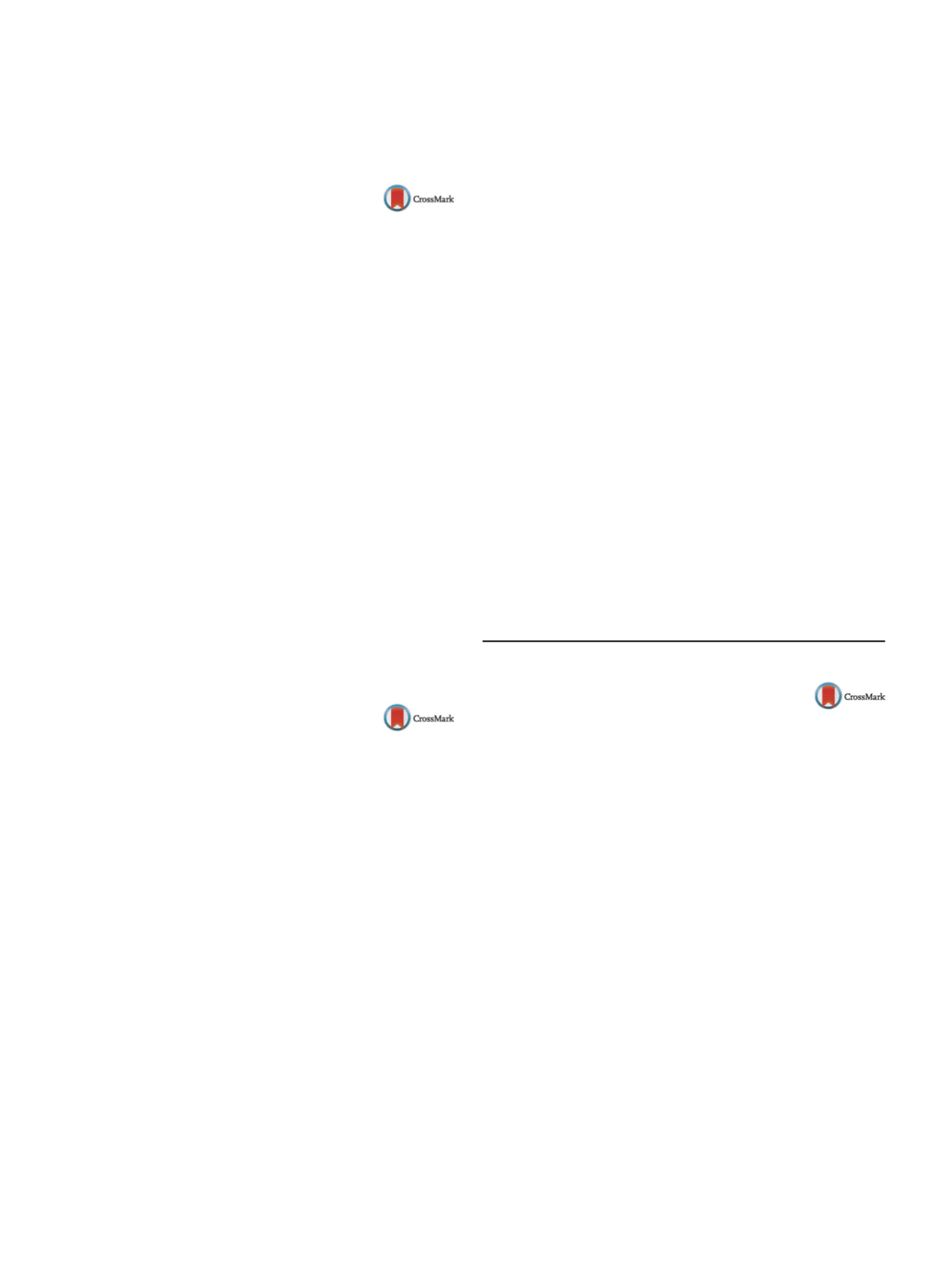

S566
25th European Congress of Psychiatry / European Psychiatry 41S (2017) S521–S582
Disclosure of interest
The authors have not supplied their decla-
ration of competing interest.
http://dx.doi.org/10.1016/j.eurpsy.2017.01.826EV0497
The psychiatric emergency service in
the Netherlands
S. Streitz
Mediant Enschede, ACC, Enschede, Netherlands Antilles
Every region in The Netherlands has got an emergency service. This
is a team of people that immediately goes to see the psychiatric
patient after an instruction of for instance the general practitioner
or the police. This special teamworks 24 hours a day, 7 days a week.
The patient is then visited by members of the team, a social worker
accompanied by a psychiatrist, or the patient will go to the ambu-
lant unit (the polyclinic) directly. This is a very effective procedure,
because behind the two people that visit the psychiatric patient,
is a whole team of people who have the opportunity to start an
ambulant treatment the day after. Through this team we have the
opportunity to treat patients intensively without a needed admis-
sion in the clinic. The basis of this team are social-nurse-therapists
who are very skilled. These people take lead in the treatment and
have a psychiatrist as a back-up. Suicidal patients are through a
special procedure included in a clinic upon a juridical decision. If
it is expected that the patient is dangerous, the police will accom-
pany the emergency teams. If psychiatric medication is needed,
the treatment will start directly. Other forms of treatment are psy-
chotherapy, a short treatment by conducting 5 meetings with the
patient, or intensive ambulant treatment. In my opinion it is a very
good example of how ambulant treatment of psychiatric patients
works and is effective for everybody involved.
Disclosure of interest
The author has not supplied his/her decla-
ration of competing interest.
http://dx.doi.org/10.1016/j.eurpsy.2017.01.827EV0498
Algorithm-based protocol for the
identification, management and
treatment of psychiatric patients with
acute psychomotor agitation
E. Vieta
1 ,∗
, M. Garriga
1, L. Cardete
2, M. Bernardo
1,
M. Lombra˜na
1, J. Blanch
1, R. Catalán
1, M. Vázquez
1, V. Soler
1,
N. Ortu˜no
1, A. Martínez-Arán
11
Hospital Clinic de Barcelona, Psychiatry/Bipolar Disorders Program,
Barcelona, Spain
2
Hospital Clinic de Barcelona, Enfermería de Psiquiatría
Infanto-Juvenil, Barcelona, Spain
∗
Corresponding author.
Introduction
Psychomotor agitation is the most common
behavioural disorder observed in emergency and psychiatry
departments. This syndrome is characterized by excessive or
inappropriate motor or verbal activity and important emotional
tension. Psychomotor agitation may be associated with medical
conditions, substance intoxication/withdrawal and in a significant
number of cases with schizophrenia or bipolar I disorder.
Objectives
The objective of this protocol was to provide up-
to-date guidance to identify, manage and treat patients with
an episode of acute agitation, considering the consensus clinical
knowledge, current ethical standards and available therapies. This
protocol is aimed to be a patient-centric tool helping to anticipate
and prevent the escalation of agitation symptoms.
Methods
The method followed to elaborate this document was
through a combination of comprehensive bibliographical review
(complied in the article “Assessment and management of agita-
tion in psychiatry: expert consensus” by Garriga M. et al. (World J
Biol Psychiatry, 2016), interaction with patients, and the clinical
experience in our centre.
Results
The elaboration of this protocol resulted in a document
that contains guidelines to identify, manage and treat patients effi-
ciently, ethically and safely. One of the novelties of the protocol
is the addition of dichotomies based on the patients’ willingness
to cooperate. The information is summarized in easy-to-use algo-
rithms for non-specialized healthcare professionals.
Conclusions
This protocol may provide the basis of a new stan-
dardized treatment paradigm for psychomotor agitation which
may help improve the patient’s experience and therapeutic alliance
with the healthcare professional and optimize resources in health-
care centres.
Disclosure of interest
COI: The preparation of the protocol
was funded by an unrestricted grant from Ferrer International.
The company had no say on protocol content. Dr Vieta has
received funding for research projects and/or honoraria as a
consultant or speaker for fromthe following companies and institu-
tions: AB-Biotics, Allergan, AstraZeneca, Bial, Bristol-Myers Squibb,
Dainippon Sumitomo Pharma, Elan, Eli Lilly, Farmaindustria, Fer-
rer, Forest Research Institute, Gedeon Richter, Glaxo-Smith-Kline,
Janssen, Lundbeck, Otsuka, Pfizer, Roche, Sanofi-Aventis, Servier,
Shire, Solvay, Sunovion, Takeda, Telefónica, Institute of Health Car-
los III [Instituto de Salud Carlos III], Séptimo Programa Marco
(ENBREC), Brain and Behaviour Foundation (NARSAD) and Stanley
Medical Research Institute.
http://dx.doi.org/10.1016/j.eurpsy.2017.01.828e-Poster Viewing: Epidemiology and social
psychiatry
EV0499
Maladaptive and addictive Internet
use in zagazig university students,
Egypt
M. Abdelghani
∗
, G. Salah El-Deen
Zagazig College of Medicine, Psychiatry Department, Zagazig, Egypt
∗
Corresponding author.
Background
Internet use has increased broadlyworldwide. There
are growing concerns about problematic Internet use (PIU) among
youth. Among undergraduate students, excessive Internet use
can adversely affect their interpersonal relations and academic
achievements.
Aim
To estimate the prevalence of PIU among Zagazig univer-
sity students, and to identify the possible associations between
sociodemographic and Internet-related factors and PIU.
Methods
A cross-sectional study included a total of 732 under-
graduate students, aged 17–34 years, from various colleges in
Zagazig University. Participants were randomly selected and
assessed for their internet use and abuse using the Internet Addic-
tion Test (IAT), along with a semi-structured questionnaire for
sociodemographic and Internet-related factors.
Results
Maladaptive Internet use was found in 37.4% of respon-
dents, and addictive Internet use was found in 4.1% of respondents.
Logistic regression showed the predictors of PIU were: using the
Internet throughout the day (OR 3.34, 95% CI: 1.75, 6.38), the num-
ber of hours spent daily using the Internet (OR 1.17, 95% CI: 1.10,
1.25), the number of days/week using the Internet (OR 1.28, 95%
CI: 1.04, 1.58), accessing the Internet using multiple devices (OR
1.55, 95% CI: 1.21, 1.98), and accessing the Internet both indoors
and outdoors (OR 1.57, 95% CI: 1.13, 2.19).
Conclusion
This is the first prevalence study of PIU at an Egyp-
tian university. PIU was common among university students.


















